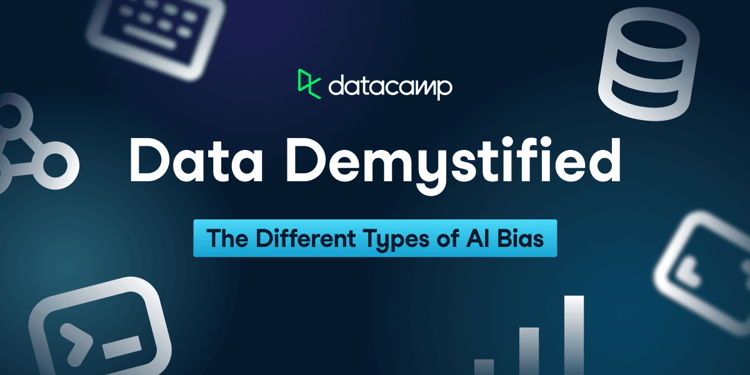Algorithmic bias refers to the systemic and repeatable errors in a computer system that create unfair outcomes, such as privileging one arbitrary group of users over others. It's a prevalent concern today, with artificial intelligence (AI) and machine learning (ML) applications increasingly permeating every aspect of our lives.
Algorithmic Bias Explained
Imagine a simple decision-making tool, like a sorting hat that puts people into different categories. But what if the hat has been only exposed to a specific type of person while learning its task? Then it might misjudge individuals who don't fit the 'usual' criteria, showing bias towards those who do. That's the crux of algorithmic bias.
This bias originates from skewed or limited input data, unfair algorithms, or exclusionary practices during AI development. It's crucial to address this issue as AI systems are now involved in significant domains like healthcare, finance, and criminal justice, where biased decisions can lead to harmful effects.
Several factors contribute to algorithmic bias:
- Data bias. If the data used to train an AI system doesn't represent the entire population, the algorithm's decisions may favor the group it was trained on.
- Prejudice in design. If the AI designers have implicit biases, these can unknowingly be transferred into the system's behavior.
- Socio-technical factors. These include the influence of social, economic, and cultural contexts on how AI systems are designed, deployed, and used, which may introduce bias.
There are many types of algorithmic bias that can be introduced during the machine learning process. For example, pre-processing bias arises from biased data cleaning processes, confirmation bias occurs when AI systems confirm pre-existing beliefs or stereotypes, exclusion bias happens when certain groups are systematically left out from the training data, and algorithmic or model bias arises from favoring certain outcomes or groups. Understanding these types of bias is crucial for building fair and equitable AI systems.
Examples of Algorithmic Bias
Real-world examples can clarify the concept of algorithmic bias:
- Hiring algorithms. Amazon once built an AI system to automate its recruitment process. The algorithm was trained on resumes submitted to the company over ten years, which predominantly came from males. Consequently, the system began favoring male candidates over females, demonstrating a clear bias.
- Facial recognition systems. Numerous studies have found that facial recognition algorithms, such as those used in surveillance or smartphone unlocking, often perform poorly with darker-skinned and female faces. This is mainly due to the lack of diversity in training datasets.
Looking forward, as AI systems become more integrated into our everyday lives, the potential impacts of unchecked algorithmic bias could be even more pronounced. Predictive policing could unfairly target specific communities, credit scoring algorithms might disproportionately disadvantage certain socioeconomic groups, and personalized education tools could limit learning opportunities for some students. The future influence of AI on society underlines the importance of addressing algorithmic bias now to ensure AI-driven decisions are fair, just, and representative of all facets of society.
Best Practices to Avoid Algorithmic Bias
Addressing algorithmic bias involves conscientious efforts at different stages of AI system development:
- Diverse and representative data. Ensure the data used for training machine learning models is representative of all the demographics the system will serve.
- Bias auditing. Regularly test and review AI systems for potential bias and fairness.
- Transparency. Maintain clear documentation about how decisions are made by the AI system.
- Inclusive development teams. Having a diverse team of AI developers can help to check and balance biases that may otherwise go unnoticed.
Opinion: We Need a Different Approach to Overcome Algorithmic Bias
The first time I realized that my dataset was biased was during the training of sentiment analysis model. I found out that even an unbalanced distribution between classes could result in biased results, with my model predicting the “Happy” label more accurately than “Neutral”. I resolved this issue by oversampling/undersampling the data, but it made me more aware of the importance of transparency and a balanced dataset in building fair automated systems.
In addition to diverse data, bias auditing, transparency, and inclusive teams, we need systems like explainable AI to detect bias in algorithms. Furthermore, law must be passed to force companies to align with Fairness, Accountability, Transparency, and Ethics (FATE) in AI.
In my view, all data likely contains some bias since it is collected from humans, who have inherent biases related to race, color, religion, systems, and beliefs. It is quite difficult to fully eliminate this issue currently. However, with the emergence of more advanced AI, we may see algorithms that can learn in more balanced ways from their environment and build applications that work equitably for all people. OpenAI's work on "superalignment", for example, aims to ensure that AI systems surpassing human intelligence remain aligned with human values and goals.
The hope is that as AI capabilities advance, we can leverage them to counteract human biases and develop AI that works for the benefit of all of us, not to our detriment. Proper oversight and thoughtful design will be key to unlocking AI's potential to combat systemic biases.
Want to learn more about AI? Check out the following resources:
FAQs
What's the consequence of unchecked algorithmic bias?
Unchecked algorithmic bias can lead to unfair, discriminatory outcomes, affecting individuals or groups who are underrepresented or misrepresented in the training data.
Can algorithmic bias be entirely eliminated?
It's challenging to completely eliminate algorithmic bias, but steps can be taken to significantly reduce it, such as bias auditing, using diverse data sets, and fostering inclusive development teams.
What's the role of regulation in algorithmic bias?
Regulation can play a crucial role by setting the standards for transparency, accountability, and fairness that AI systems should meet, thereby helping to control algorithmic bias.
Can algorithmic bias be detected and measured?
Yes, algorithmic bias can be detected and measured through various techniques, including disparate impact analysis, equality of opportunity, and predictive parity. It often involves comparing the algorithm's performance across different groups to identify if certain groups are disproportionately impacted.
What is an example of a real-world impact of algorithmic bias?
A notable real-world impact of algorithmic bias was seen in healthcare, where an algorithm used to guide healthcare decisions for millions of patients was found to have racial bias. It was less likely to refer Black people than White people who were equally sick to programs that aim to improve care for patients with complex medical needs.
How can everyday users check for algorithmic bias?
While technical expertise may be required for in-depth bias analysis, everyday users can watch out for consistent patterns of unfair outcomes, especially if these outcomes consistently disadvantage a certain group. If such a pattern is noticed, it should be reported to the respective organization or, if necessary, regulatory authorities.

As a certified data scientist, I am passionate about leveraging cutting-edge technology to create innovative machine learning applications. With a strong background in speech recognition, data analysis and reporting, MLOps, conversational AI, and NLP, I have honed my skills in developing intelligent systems that can make a real impact. In addition to my technical expertise, I am also a skilled communicator with a talent for distilling complex concepts into clear and concise language. As a result, I have become a sought-after blogger on data science, sharing my insights and experiences with a growing community of fellow data professionals. Currently, I am focusing on content creation and editing, working with large language models to develop powerful and engaging content that can help businesses and individuals alike make the most of their data.

